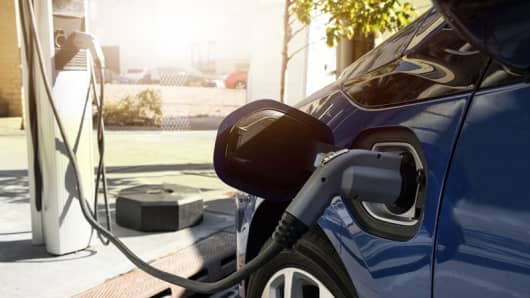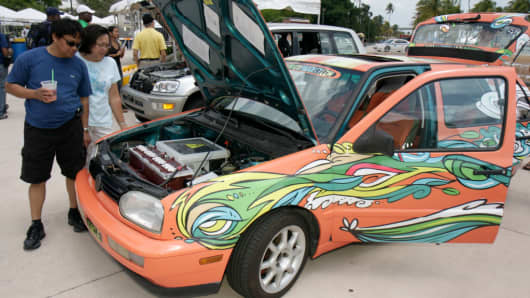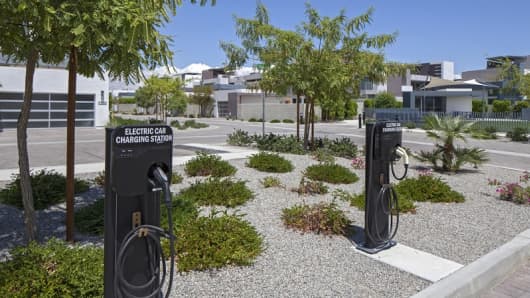More than 750,000 electric cars were sold in 2016 and the global electric car stock grew to more than 2 million, according to the International Energy Agency (IEA).
As people become more environmentally conscious, major motor manufacturers are making big changes. Every Volvo from 2019, for example, will have an electric motor, while Ford recently announced that it would increase its planned investments in electrification to $11 billion by 2022.
Here, Sustainable Energy takes a look at electric vehicles: how they work, their environmental impact and the role they will have to play in the future of transport.
The inside of EVs
An electric vehicle uses a battery pack to store electric energy, which in turn powers a motor. These vehicles are charged up, usually at a charging station on the street.
According to the U.S. Department of Energy’s Alternative Fuels Data Center, fully charged EVs have, at present, a shorter range “per charge” than conventional vehicles with a tank of gas. Driving conditions and driving habits can influence both the efficiency and range of EVs, the DOE says.
One of the current challenges for EVs is ensuring there are enough charging stations for longer journeys to be completed. Efforts are being made to remedy this.
In January, for instance, BP Ventures invested $5 million in FreeWire Technologies, a U.S. company that specializes in mobile electric vehicle rapid-charging systems. BP said it planned to use the units at a selection of BP retail sites in the U.K. and Europe this year.
In the U.K., the Office for Low Emission Vehicles is providing more than £900 million to place Britain at “the global forefront” of the development, manufacture and use of ultra-low emission vehicles.
The environment
While the energy sources that some charging stations use may not be regarded as “sustainable,” it is true that, in terms of direct emissions, electric cars do have their advantages. “Electric vehicles come with zero pollutant emissions at the tailpipe — there’s no tailpipe,” Pierpaolo Cazzola, a senior energy and transport analyst at the IEA, told Sustainable Energy.
The DOE has said that electric vehicles can cut emissions that contribute to both smog and climate change, thus boosting public health and “reducing ecological damage.”
For its part, the European Commission says that the use of electricity as an “energy vector for vehicle propulsion” offers the possibility of substituting oil with a wide range of primary energy sources.
This, the Commission adds, could ensure the security of energy supply as well as a “broad use of renewable and carbon-free energy sources in the transport sector.”
The future
In some countries, the transition to electric vehicles is gaining momentum.
In Europe, Norway offers a glimpse of a future when electric cars have an integral role in society. In December, around 27 percent of new cars sold in Norway were “battery electric,” according to its government.
Efforts are underway to make the move from traditional, petrol-powered vehicles, to electric ones. Battery electric cars sold in Norway have exemptions from value-added tax, one-off registration tax and traffic insurance tax. These vehicles are also, barring a few restrictions, allowed to drive in bus lanes and park for free or half price.
In China, which has long standing issues with air pollution, changes are also being made, often on a large scale.
One of China’s major cities and a hub for technology companies, Shenzen, is now home to a vast fleet of electric buses. Last June, authorities announced that the Shenzhen Bus Group had replaced all 5,698 of its buses with electric vehicles.




